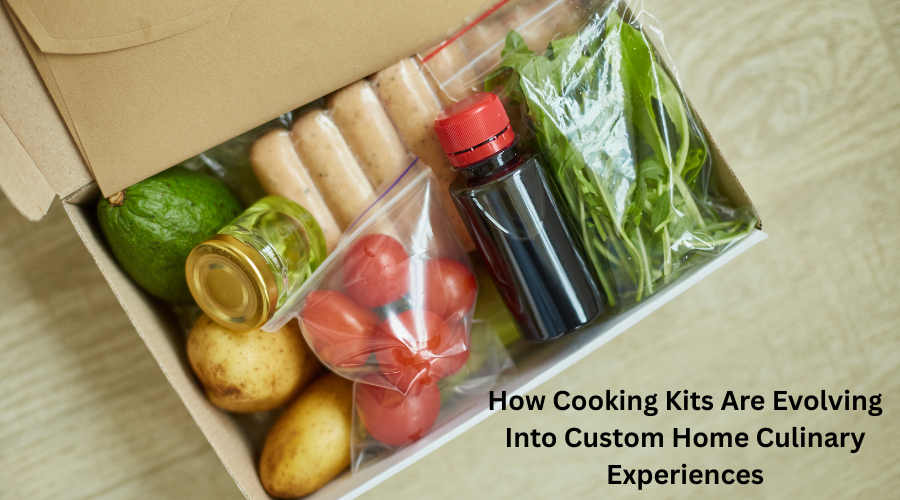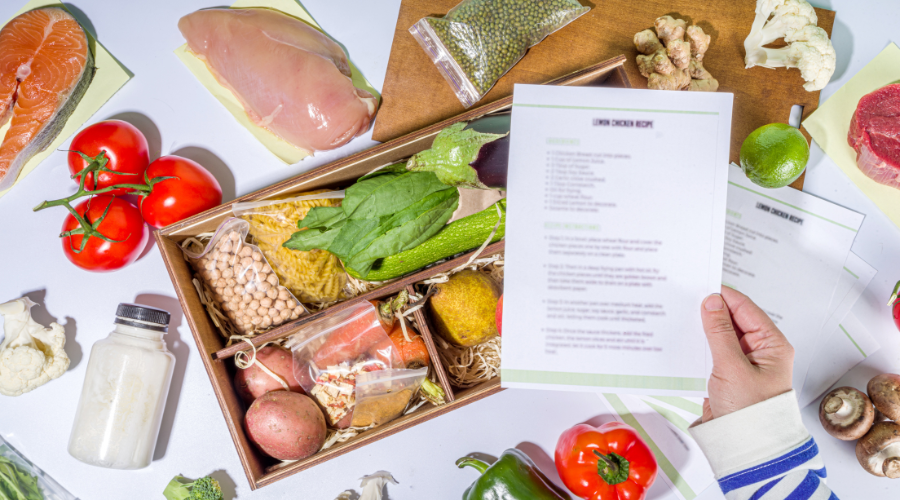-
 69/646 Moo6, Bungkhumproy, Lumlukka, Pathumthani 12150, Thailand
69/646 Moo6, Bungkhumproy, Lumlukka, Pathumthani 12150, Thailand
 69/646 Moo6, Bungkhumproy, Lumlukka, Pathumthani 12150, Thailand
69/646 Moo6, Bungkhumproy, Lumlukka, Pathumthani 12150, Thailand

The way cooking kits are used has revolutionized in recent years. What was once simple meal containers with pre-idea ingredients has now come to be custom designed culinary reviews. These kits have become way beyond simple recipes and ingredients. They offer full cooking experiences that meet personal tastes, abilities, and nutritional requirements.
The initial cooking kits used the one-size-fits-all strategy. Businesses mailed out fixed recipes containing pre-measured portions to the subscribers. Similar meals were served to everyone, regardless of their preferences or cooking skills. This model was initially successful, yet it left many customers wanting variety and customization.
Contemporary cooking kits are now available for individual use. Further systems monitor tastes, food restrictions, and past choices to propose applicable decisions. This has turned the generic into something more personalized, thus making the cooking kits more attractive to various audiences.
Digital platforms have transformed how cooking kits are used. Mobile apps will enable users to browse hundreds of recipes and choose meals that meet their specific needs. Such applications save previous selections and act upon user behavior in order to become better at offering recommendations as time passes.
The interactive capabilities allow users to adjust the portions of their servings, change ingredients, and edit recipes based on what they have at home. This scale minimizes the waste of food and gives more freedom to the cooks in terms of their dishes.
Health awareness has led companies that offer cooking kits to expand their product offerings significantly. Standard meal plans no longer meet market expectations. Services now offer specialized options for different dietary plans such as vegetarian, vegan, keto, paleo, gluten-free, and low-sodium diets.
Nutritional information has been more elaborate and open. Before ordering, customers can see detailed calorie, vitamin, and allergen information. Other apps are linked to fitness apps to create meal plans for workouts and health goals.
Medical considerations are also treated. Health-specific kits, such as diabetic or heart disease, give the right recipes and are clear on nutritional advice. This customization is medical-grade, making cooking kits an instrument of wellness rather than mere convenience goods.
Now, cooking kits are more applicable to people at every level of experience. User-friendly versions are step-by-step instructions and pictures, simplified methods, and the use of regular ingredients. These kits develop confidence among first-time cooks without making it too complicated.
Intermediate and advanced choices are more advanced and present more difficult methods and exceptional ingredients to an experienced home cook. Other services will provide masterclass-style kits that will teach a particular skill, such as knife skills, making a sauce, or baking bread. Through these educational elements, meal preparation offers opportunities for skill development.

The exploration of global cuisine has taken over the evolution of the kitchen. Businesses collaborate with various cultural chefs to produce original regional dishes. These kits have conventional ingredients that may not be readily available in the normal grocery store.
Most international recipes include educational content. The story of ingredients, their cultural importance, and common techniques adds flavor to cooking. This will make it possible to make dinner-making into cultural learning.
One can no longer afford to be less authentic. Kits include authentic recipes for international dishes, using proper ingredients and methods rather than simplified Western versions. This naturalness attracts consumers who want to explore authentic cuisines rather than generic versions.
The cooking kit industry has evolved to include not only everyday food but also luxury. Luxury kits are created using quality and premium ingredients such as specialty meat cuts, artisan cheeses, and rare spices. These high-end products are aimed at special events, holidays, or consumers ready to spend more on outstanding home dining products.
Specialty kits are cuisine-specific. Wine pairing kits contain recommended drinks and a tasting note. Baking kits are equipment and ingredients for pastries, breads, or desserts. Grilling supplies come in a seasonal pack with all the necessities to grill outdoors.
The evolution of cooking kits has been driven by environmental consciousness. Sustainable sourcing, local farms, and reduced packaging have become priorities for many services. The customers will have a choice in terms of environmental impact as well as taste and nutrition preferences.
The seasonal menus reflect local produce availability to reduce transportation emissions and support local agriculture. Some companies emphasize farm partners and provide details on ingredient origins.
There is concern about waste associated with packaging innovations. Environmental footprints are less evident in recyclable materials, reusable containers, and packaging designs that lack comprehensiveness. This sustainability orientation appeals to environmentally conscious people who want convenient cooking without excessive waste.
Cooking kits are continually evolving beyond their current potential. The future trend is towards even more personalization through the use of artificial intelligence that can anticipate preferences more accurately. Virtual reality cooking classes could accompany future kits and offer interactive learning.
Timing and temperature controls would be automated upon integration with smart kitchen appliances. Suppose that there are kits that communicate with ovens and cooktops to make everything best.
The shift within the fundamental field element to the entire culinary experience suggests the evolving customer expectations. The individuals desire comfort without compromising on quality, personalization, and getting to know opportunities. Cooking kits that deliver these aspects will prosper, as they adapt to changing demands and interests in the culture of cooking at home.
Q1: Do personalized cooking kits cost more than plain meal kits do?
Personalized cooking kits are usually priced higher than simple ones because of customized orders and special ingredients. However, costs vary widely depending on the level of customization and the luxury features one prefers.
Q2: How do cooking kit companies deal with dietary allergies and restrictions?
The majority of cooking kit services these days offer the option to filter recipes by allergens and dietary needs, so meals do not contain ingredients such as nuts, dairy, gluten, or shellfish, depending on the individual's requirements.
Q3: Can cooking kits assist in enhancing actual cooking skills or offer meals?
Yes, most cooking kits now come with detailed instructions, techniques, and recipes that teach proper cooking techniques, making them valuable learning tools rather than just for cooking a meal.